Objective
- Telehealth uses information technology.
- Provides patients with care even at long distances.
- Supports public health.
Telehealth is a new model of delivering healthcare services to patients using innovational technology. The Office of National Coordinator for Health Information Technology (n.d.) defines it as “the use of electronic information and telecommunications technologies to support long-distance clinical health care, patient and professional health-related education, public health and health administration” (para. 1). An essential element of Telehealth is that unlike telemedicine, it incorporates training and educational activities, thus, addressing a broader scope of issues in the current medical industry. This presentation has an objective to describe the need for healthcare services that apply Telehealth, explain the specifics of Synchronous Telehealth and Asynchronous Telehealth. In addition, it will outline an emerging technology and its impact on nursing and provide a personal opinion on the matter.
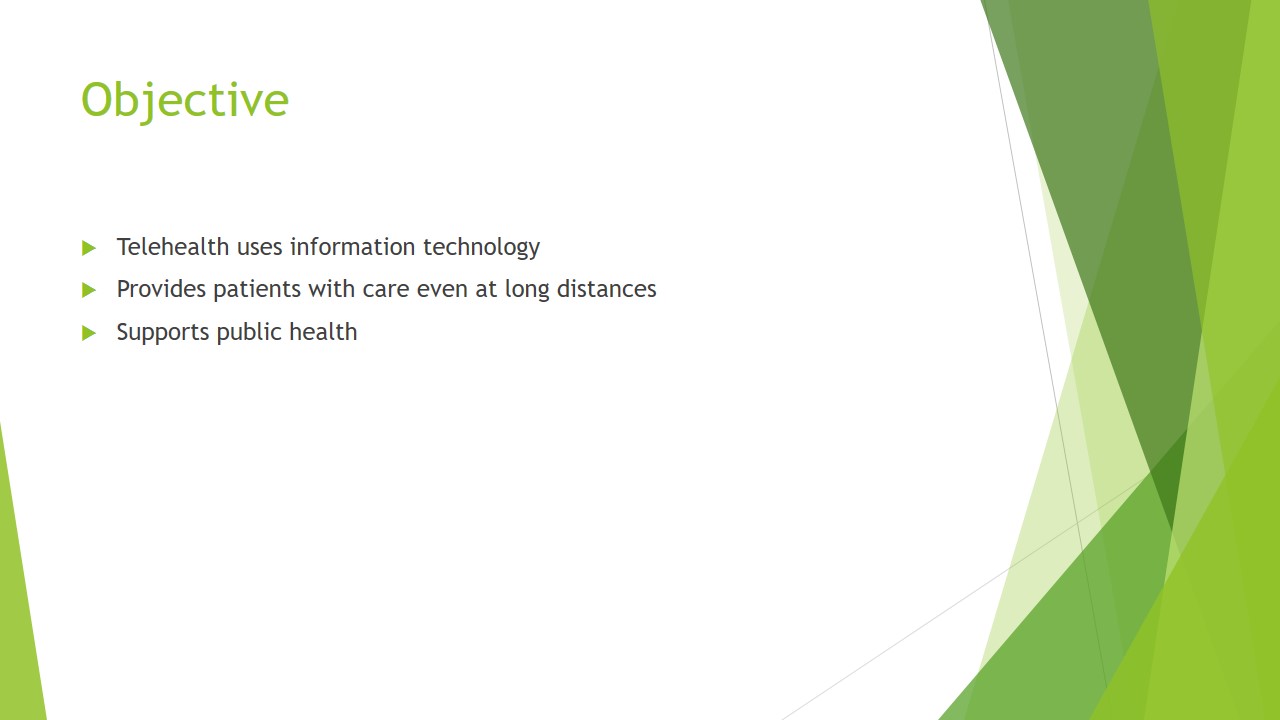
Need for Telehealth Services
- More convenient when compared to traditional services.
- Significantly reduces costs for patients and providers.
- Grants easy access to people in remote locations.
- Can be used to address acute and chronic conditions.
- Better diagnostics and improved outcomes of treatment.
- Allows home monitoring of conditions.
- Nursing shortage can be addressed via Telehealth.
In order to fully understand why Telehealth is an enormously important technology for the healthcare system in the US, it is necessary to examine the current issues that it has. Dorsey and Topol (2016) argue that similar approaches, for instance, consultations via telephone, where used by some physicians for many years. However, only recently, the policy makers and professionals working in healthcare dedicated significant efforts towards using new technology to contact patients. This approach is valid because it allows a physician to address a variety of health conditions without a need to see the patient in person. Apart from convenience and access that is the primary feature of this technology, Telehealth allows minimizing medical expenses for patients.
Telehealth allows delivering healthcare services through telephones, smartphones, and other technological devices, making it accessible to millions of people. The California Telehealth Resource Center (n.d.) argues that it allows “impact some of the most challenging problems of our current healthcare system: access to care, cost-effective delivery, and distribution of limited providers” (para. 1). As a result of easy access, patients can have improved health outcomes because in general, conditions that are addressed in the early stages are more easy to treat. In ICU’s, this technology reduces both mortality rates and length of stay for patients (The California Telehealth Resource Center, n.d.). Home monitoring is an essential aspect of cost cutting without harming the quality of care.
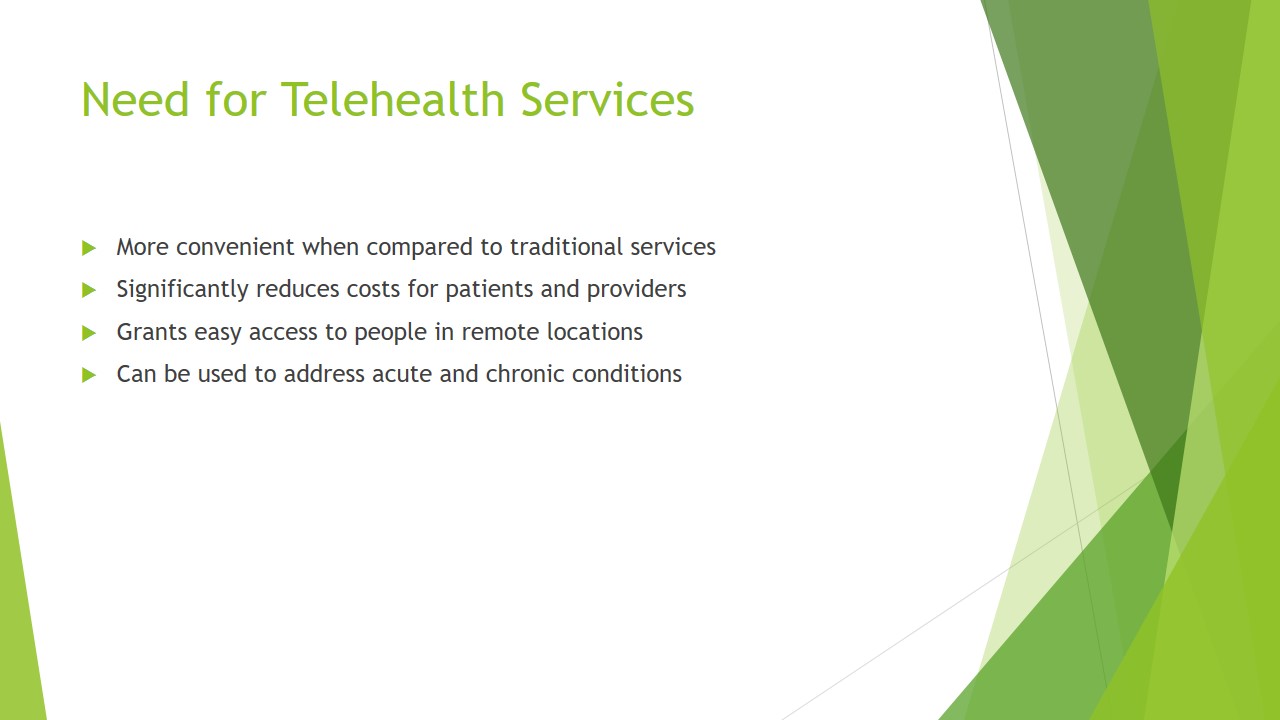
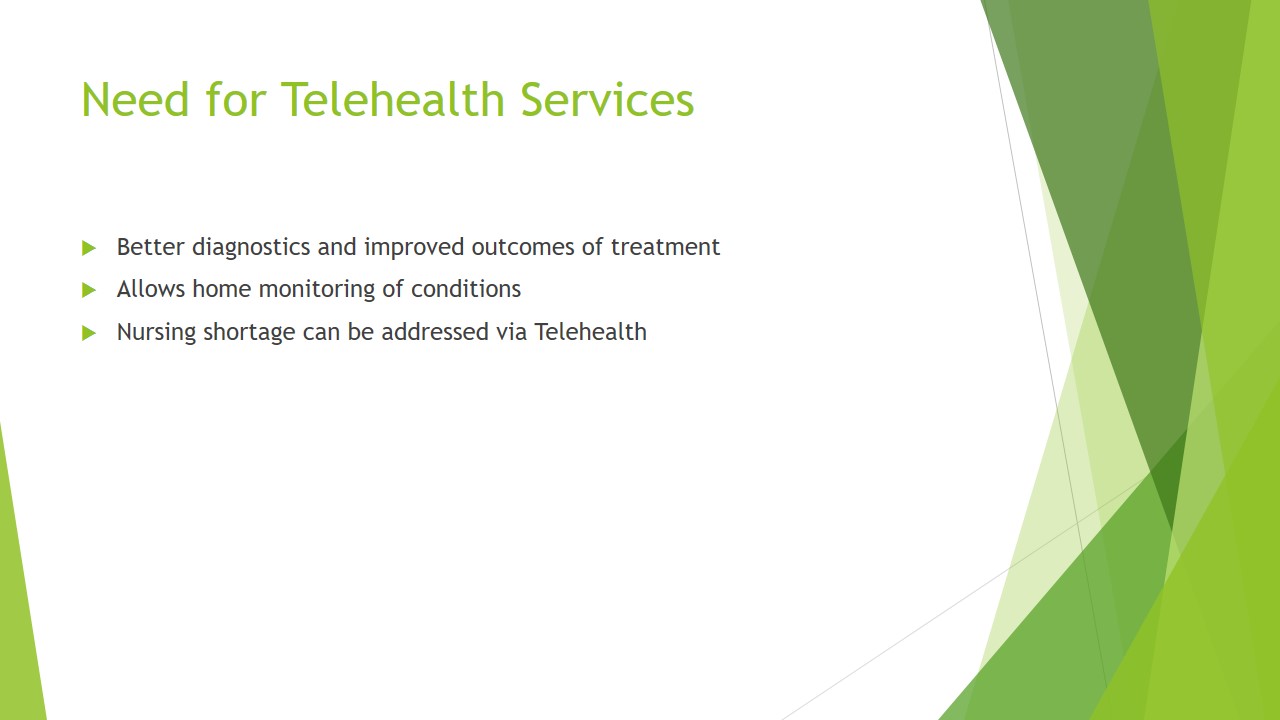
Synchronous Telehealth
- Live, real-time communication between a provider and a patient.
- Requires audiovisual technology and high-speed internet.
- Depends on the availability of communication resources and scheduling.
While Telehealth is proven to be a necessity for modern-day delivery of healthcare services, there is no unified opinion regarding the strategies of use. Synchronous Telehealth is a real-time interaction that usually applies video and audio transmitting technology and allows patients to talk to medical professionals (“What is telemedicine?,” n.d.). The one issue is that this approach is limited by the video conferencing capacity of a particular institution, meaning that physicians may not always be ready to accept calls from patients. In addition, scheduling can be another problem because although Telehealth illuminates the need to drive to a medical establishment, with the synchronous approach, both the patient and medical professional have to be available.

Asynchronous Telehealth
- Transmits data from patient to physician a need for an immediate response.
- Digital images, videos, test results are part of this approach.
- Reduces waiting for lines and has a potential of transforming the system.
Asynchronous Telehealth can help reduce issues such as waiting for time and satisfaction of both patients and providers. However, it is evident that some conditions, for instance, congestive heart failure, cannot be addressed through this approach because the consequences of untimely care can be irreversible. In general, this technology is applied to transfer test or diagnostics results from one location to another or for a consultation with a different medical professional (“What is telemedicine?,” n.d.). Unlike synchronous Telehealth, this model allows a physician to address the request after reviewing all necessary data. The current advances in Internet technology allow an easy and quick exchange of large files containing patient information, which can help change the existing costly infrastructure of healthcare in the US.

Personal Opinions of Telehealth
In my opinion, Telehealth is:
- Valuable in the current challenging healthcare environment.
- Helpful for both patients and medical personnel.
- Adequately addresses current issues.
- Further innovations can alter the current structure of health services.
- Education is an essential and beneficial element of Telehealth.
Personally, I think that technologies such as Telehealth are vital in the current healthcare environment. The current population is aging, meaning that health establishments will have to respond to an increasing need for care, especially for chronic conditions. At the same time, lack of qualified personnel because of human capital shortage and high turnover of staff in medical establishments that already experience issues with nurses or physicians further worsen the problem. Another aspect that should be noted is the fact that patients living in rural areas or other remote locations can often neglect care because of difficulties associated with having a medical appointment.
In general, I would argue that Telehealth is useful for both nurses and patients. A critical aspect of it is educational opportunities for medical professionals allowing them to improve their qualification be accessing information on a convenient schedule. This is very helpful in addressing the shortage of personnel issue as I think many people cannot afford to obtain a degree while having a full-time job. However, I believe that the primary problems obstructing a broad application of this technology are information technology skills and data privacy. The latter was addressed by policymakers, while the first issue is yet to be resolved. This refers to the capabilities of both patients and medical personnel.
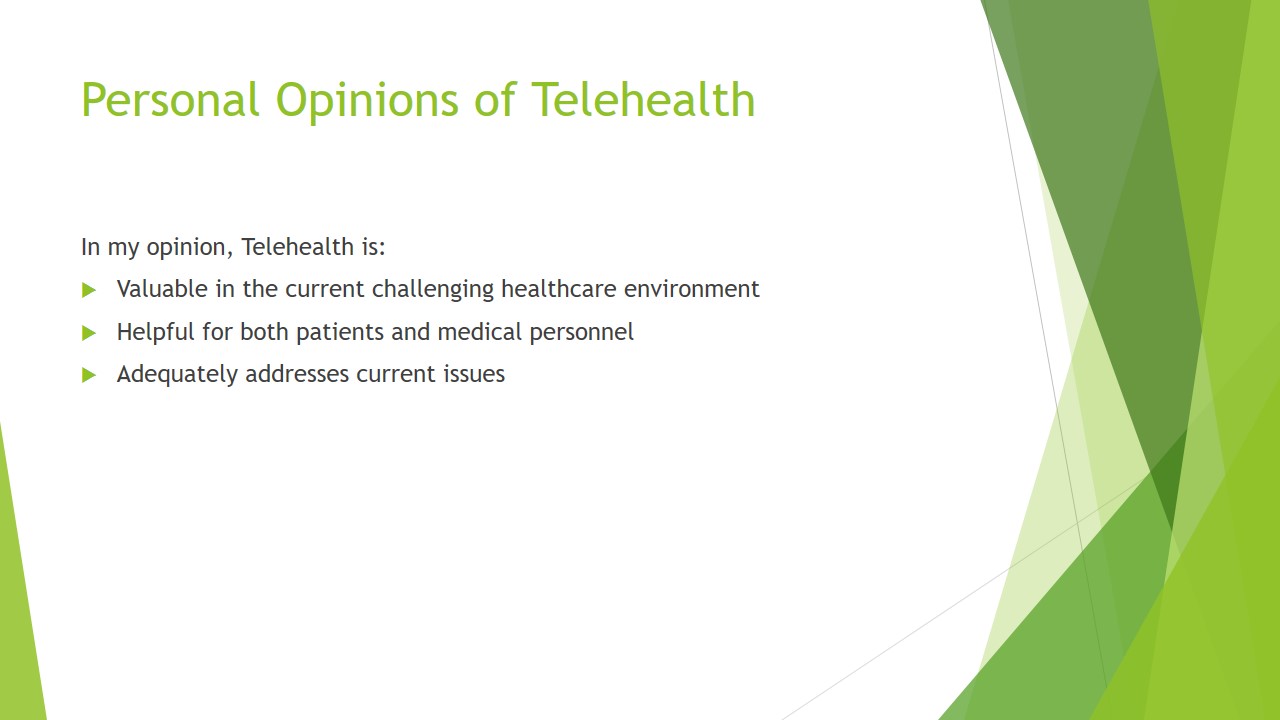
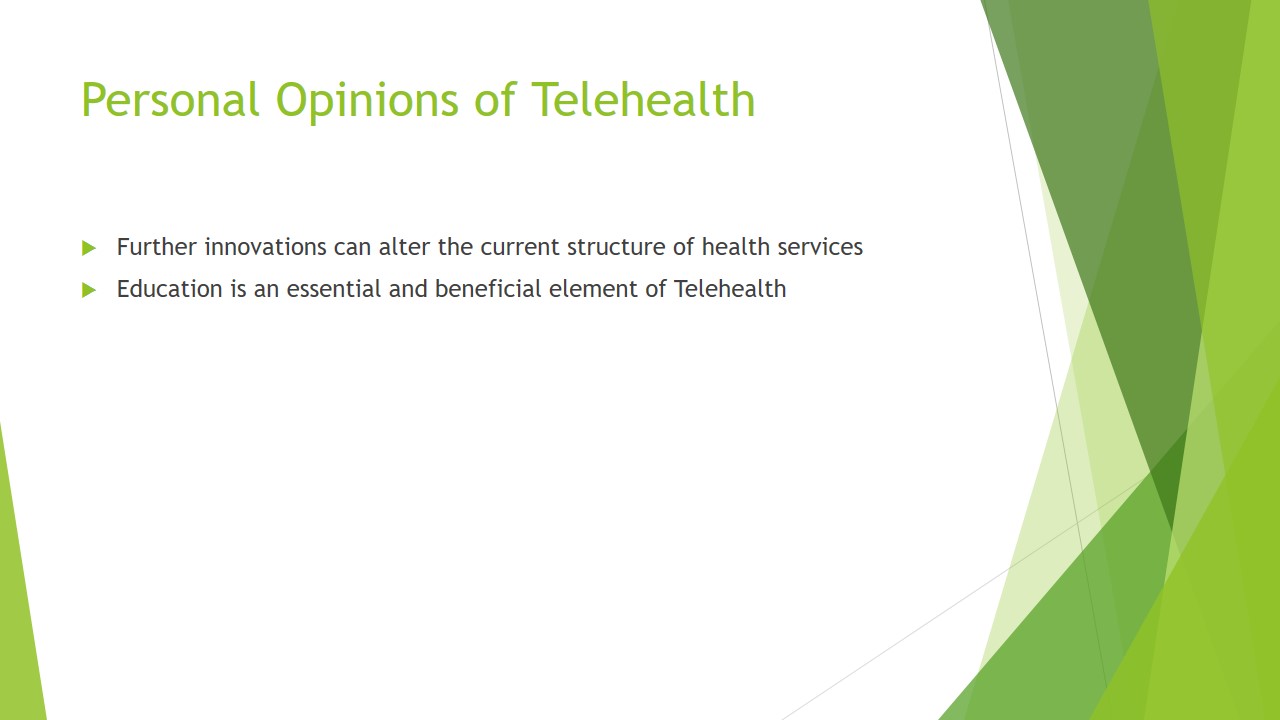
New Technology in Healthcare
- mHealth is the use of smartphones is different domains of healthcare.
- Surveillance of patients is the crucial aspect of this technology.
- mHealth allows the provision of ongoing treatment support outside a hospital.
mHealth is used to:
- Educate patients about preventable conditions.
- Provide a tool for tracking adherence to the treatment plan.
- Share advise about necessary lifestyle changes.
- People in the US use their smartphones to locate health-related data.
- 69% of people in the US track health indicators (Holaday, Meehan, & Watt, 2015).
- The majority of people tracking their health have a chronic condition.
The term mHelath refers to techniques and applications through which a patient can access valuable health-related information via a smartphone. Unlike Telehealth, this novelty does not imply direct contact with a medical establishment. An article by Moore, Holaday, Meehan, and Watt (2015) explores the implications of mHealth, its benefits, and prospects for future development. According to the authors, currently, over 100,000 applications exist that allow patients to track their medical records, examine their weight, or manage their illnesses. Additionally, the technology enables medical establishments and professionals to monitor adherence to treatment, which is especially crucial for patients with chronic conditions.
mHealth technology aims to raise awareness about diseases that can be prevented with adequate lifestyle and habits. Thus, it is an especially important technology because of the aging population and increasing burden of chronic conditions because most of them are preventable. Also, this technology is especially convenient for the consumer because it does not require any additional resource since it utilizes a smartphone. This has implications for improving the health state of many individuals through improved adherence to recommendations.
The emergence of mHelath is facilitated by the already existing prevalence of smartphone users and the fact that a large number of them uses mobile technology to gain more insight into the health-related questions. Moore, Holaday, Meehan, and Watt (2015) argue that approximately 31% of people use their phones to locate health-related information. This can occur when they feel sick or experience other significant change in their health state. In addition, over 69% of US citizens use their phones to track at least one health-related indicator.


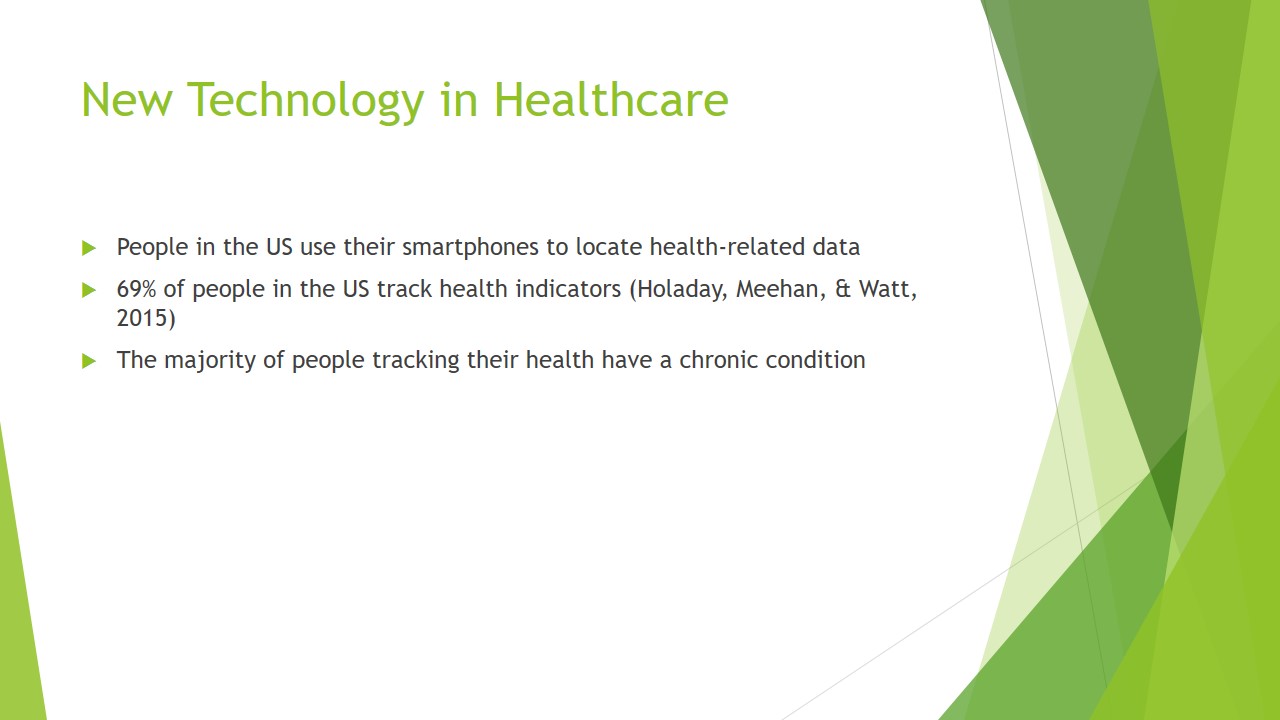
How Nursing is Impacted by this New Technology
- mHealth allows nurses to participate in:
- Research and development of interventions;
- Monitoring of patients outside the healthcare facility;
- Improve the self-efficacy of patients;
- Technology is transforming the healthcare environment;
- Nurses can improve patient care by utilizing mHelath and Telehealth;
- Innovation helps nurses address the increasing issue of chronic diseases.
mHealth is a promising new technology that can change the existing approaches to care. Moore, Holaday, Meehan, and Watt (2015) argue that nursing becomes increasingly integrated with novel technology. It is vital for nurses to take part in the development of mHelath because their unique insight can be used to enhance the existing strategies. This technology can improve the current strategy for studying and treating diseases, allowing nurses to develop more efficient interventions. For instance, mHelath applications allow tracking weight and exercise that should be done by an individual. A nurse who advises a patient with a chronic condition that requires can offer him or her to use a tracking application, which should improve adherence to the proposed intervention.
There are several implications of the mentioned technology for nursing professionals. Moore, Holaday, Meehan, and Watt (2015) argue that chronic illness should be the center of attention within the current healthcare industry innovations, and mHealth has the technology to address this issue. Nurses are able to use mHelath to track and monitor patients. According to Moore, Holaday, Meehan, and Watt (2015) “70% of all deaths in the United States of America are related to chronic disease” indicating the severity of the problem (p. 35). Overall, innovational technology, such as Telehealth and mHealth help improve the current healthcare system and deliver efficient care to all individuals.
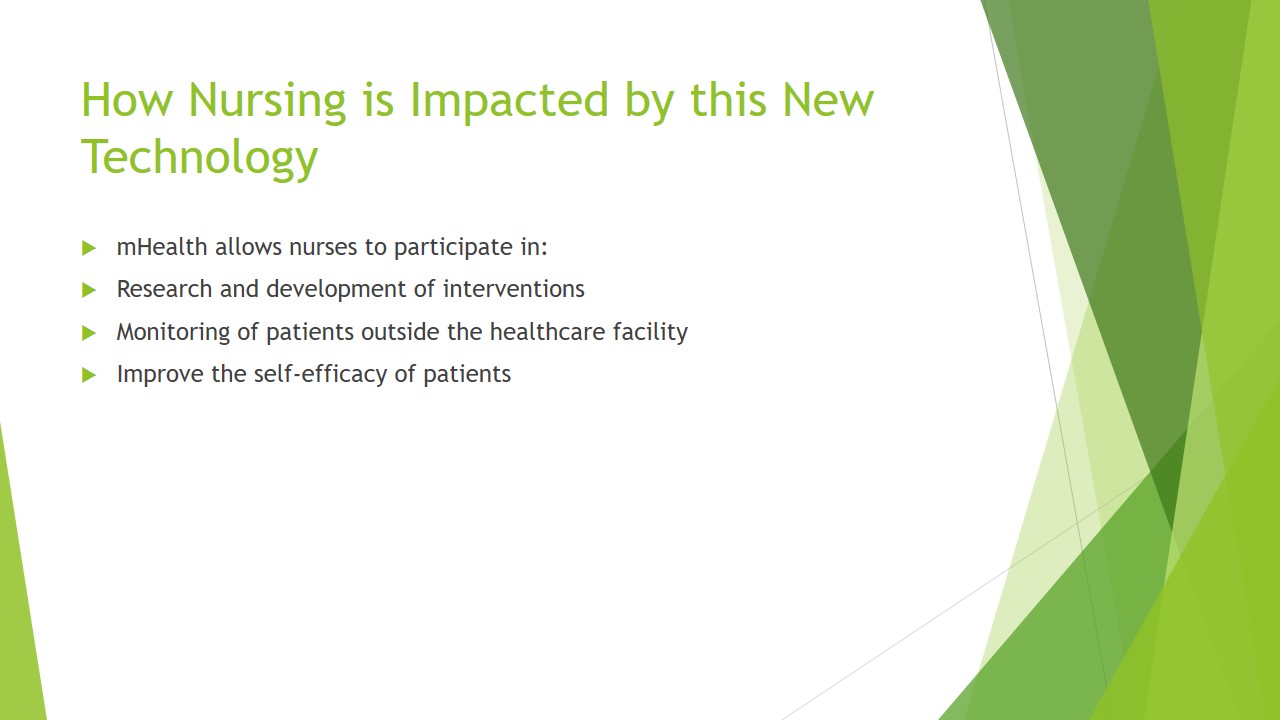
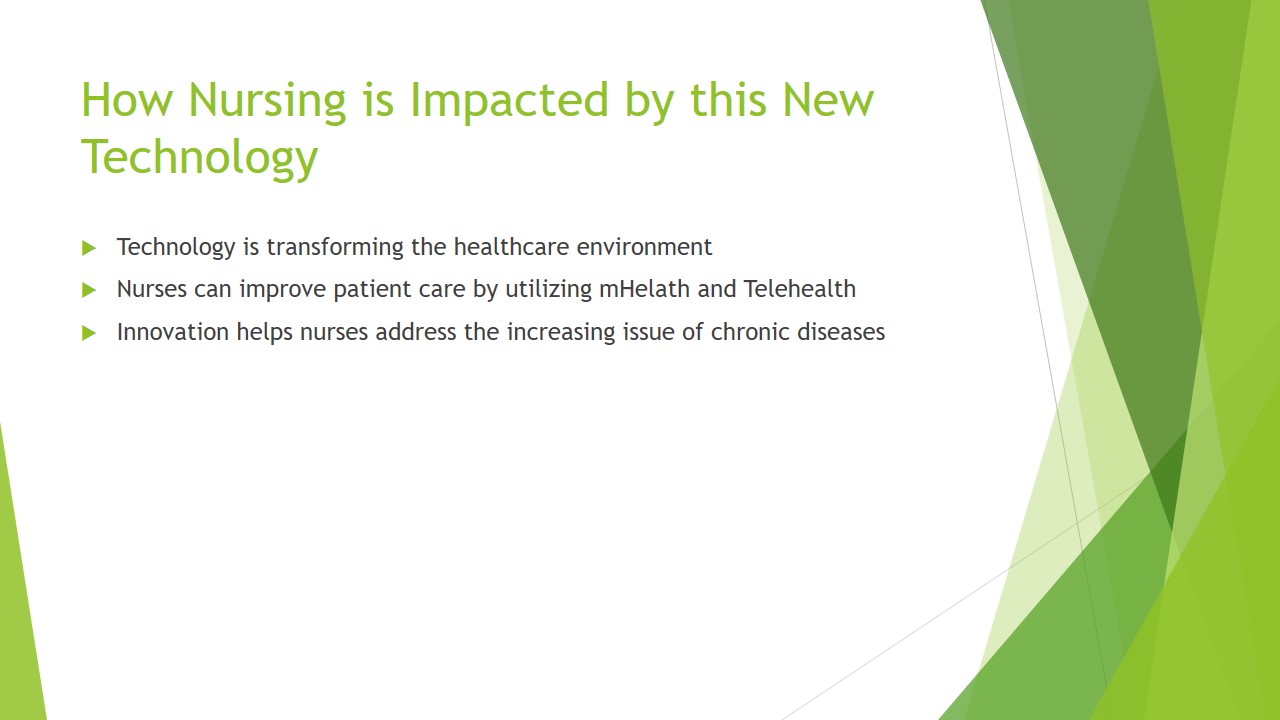
References
California Telehealth Resource Center. (n.d.). Why are Telemedicine and Telehealth so important in our healthcare system? Web.
Dorsey, E. R., & Topol, E. J. (2016). State of Telehealth. The New England Journal of Medicine, 375(2), 154-61. Web.
Moore, S., Holaday, B., Meehan, N., & Watt, P. (2015). Exploring mHealth as a new route to bridging the nursing theory-practice gap. Research and Theory for Nursing Practice: An International Journal, 29(1), 38-52. Web.
The Office of the National Coordinator for Health Information Technology. (2017). What is telehealth? How is telehealth different from telemedicine? . Web.
What is telemedicine? (n.d.). Web.